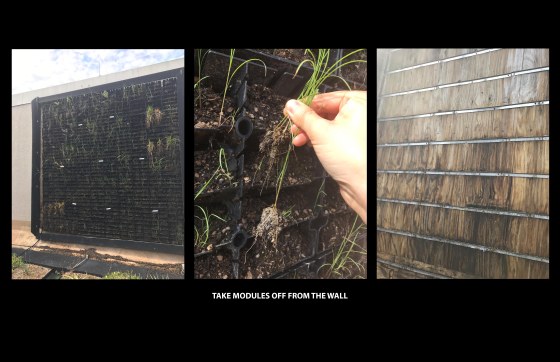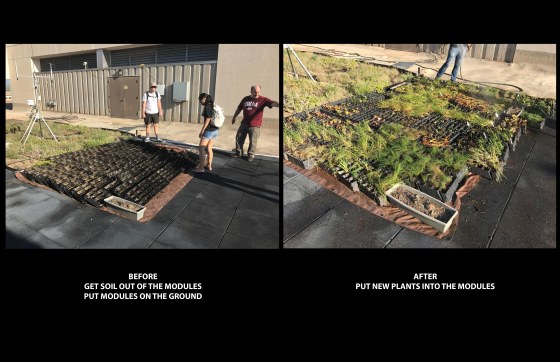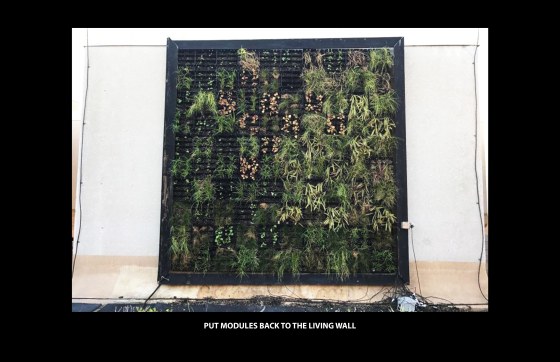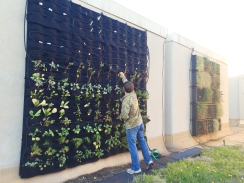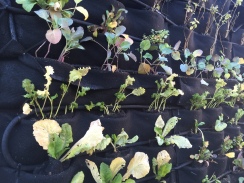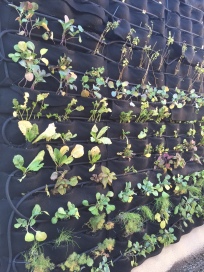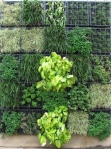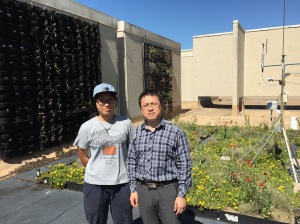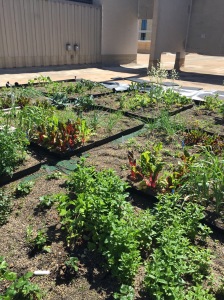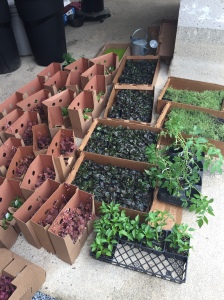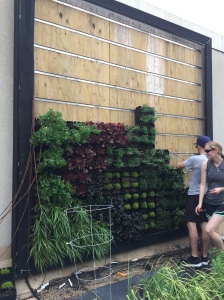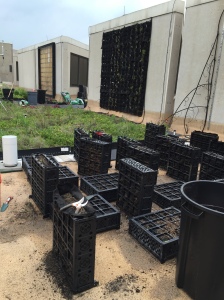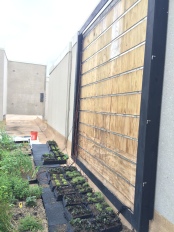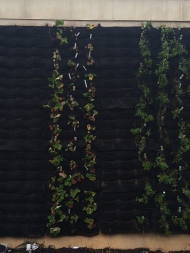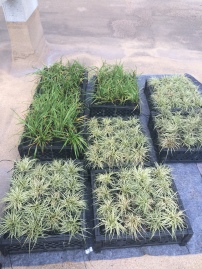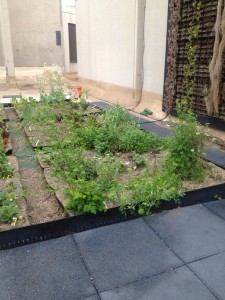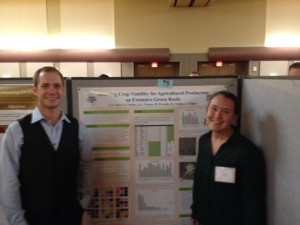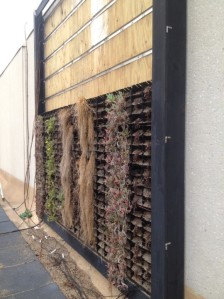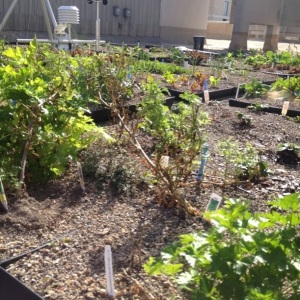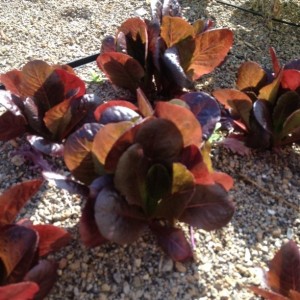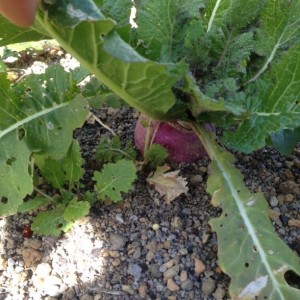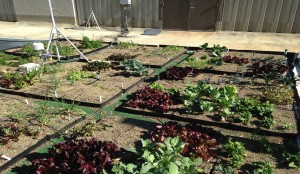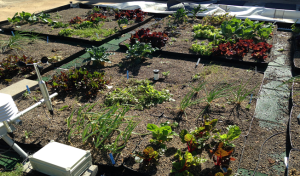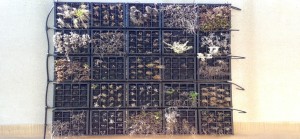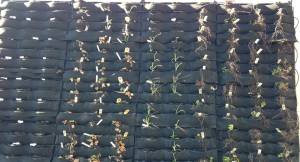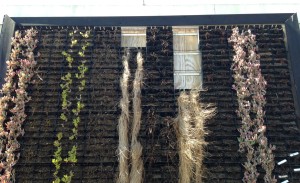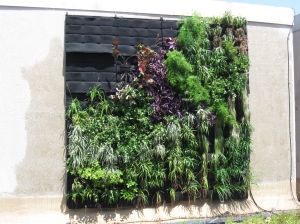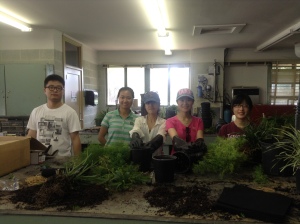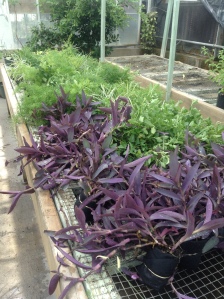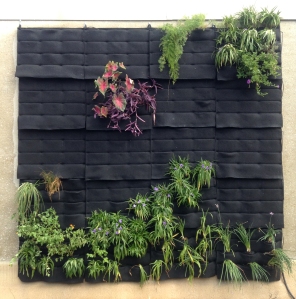One of our first tasks this semester was to identify potential plants for replanting two of the modular green wall systems in our experimental setup. Last year, we replanted wall 2, the one with the pockets I dislike so much, and now it is time to select plants for walls 1 & 3. I’ve found that I enjoy the process of researching and identifying potential plants for use in green roof and wall systems, so I wanted to use this space to enumerate some of the more crucial aspects of the process. These include characterizing the site, identifying required plant traits, and then searching for a match.
The first step in the process is identifying the microclimate that the wall system will inhabit. In our case, since we are working on walls installed on the exterior of a building, the regional climate plays a large role in this. Many living walls you may see on pinterest or wherever may be inside buildings, and for those, local exterior conditions may not be as important. In our case, however, it is important that the plants are hardy enough to survive in the climate of central Texas. That means USDA Hardiness Zone 8B.
Microclimate, of course, implies that there are smaller-scale climactic variables that affect the walls. These include things like sunlight and wind patterns that are affected by the built context of the site. All of our systems are mounted on the south facing walls of a rooftop enclosure on top of the Langford architecture complex here at TAMU. The other walls of the enclosure provide wind shelter for the site, but also affect levels of shade throughout the day.
All of these considerations are further refined by the differing designs of the systems themselves. These vary in terms of plant positioning, substrate depth & composition, and irrigation design. For example, Wall 1 uses modules with 8 compartments that project out from the wall at a slight upward angle, maybe 30 degrees. The slots in bottom dividers allow irrigation to trickle down from module to module, and the plants grow at an angle. This would seem optimized for plants that are commonly grown in pots and tend to produce foliage that cascades down. Unfortunately, the slots only go part of the way down the module divider, and the bottoms of the compartments often fail to drain and can get waterlogged. Therefore, moisture tolerant species may be necessary. Wall 3, on the other hand, uses large, boxy modules that each hold one large bag of substrate. There is no angle in this system, and also no dividers within the modules. This provides greater nutrient access for plants, but also allows greater competition among species, and requires they grow straight out from the wall.
Having characterized the unique concerns of each system’s microclimate and gained a sense for the constraints that plants will have to cope with, we can develop out some desired trait parameters and go research. I primarily did this using the wildflower.org database that allowed me to sort plants based on criteria. For example, Zone 8, full-sun, perennial, 0-18” tall, and moist-wet soil tolerant. Then one can sort through that entire list for plants that combine those characteristics with aesthetic appeal. Sounds a bit boring, right? It is.
What’s more fun is to go out into the community and identify plants already growing in sites with similar microclimates to the roof. This is the ‘go out in nature and find plants growing I those conditions’ method, and I did it constantly on a recent trip to Spain. In Valencia, I encountered several plants in environments that made me think. Valencia sits astride the former riverbed of the Turia river, which was diverted mid-century because it kept flooding. The entire riverbed was converted into a park that basically runs the length of the city. It’s cool.
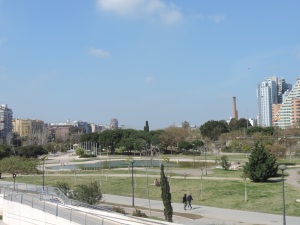
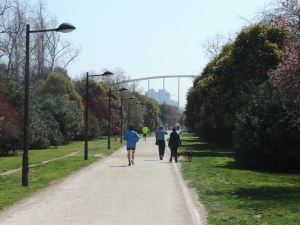
See?
When the entire park is probably 15-20 feet below street level in the city, and as such, the former riverbanks are now large walls that simulate the environment on the roof quite well. The park and street level are connected by long ramps, the sides of which are more intentionally vegetated, but also steep and providing a natural comparison to our site. I found numerous plants growing in a crack in the wall or tumbling down the side of an embankment that I thought resembled our wall environments.
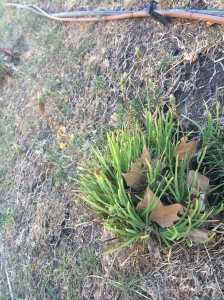
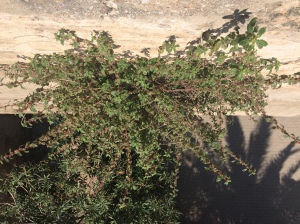
The first one is growing out of the side of the embankment, the first is just popping out of the side of a bridge.
These discoveries not only gave me plant ideas, they also helped me identify useful characteristics I had not considered, and helped refine my search process. Seeing plants growing in nature also sheds light on how people relate to the species, on the subjective experience of interacting with that plant. This is an important consideration, as the human impact of green roofs/walls is just as important as any environmental or resource efficiency benefits they impart.
